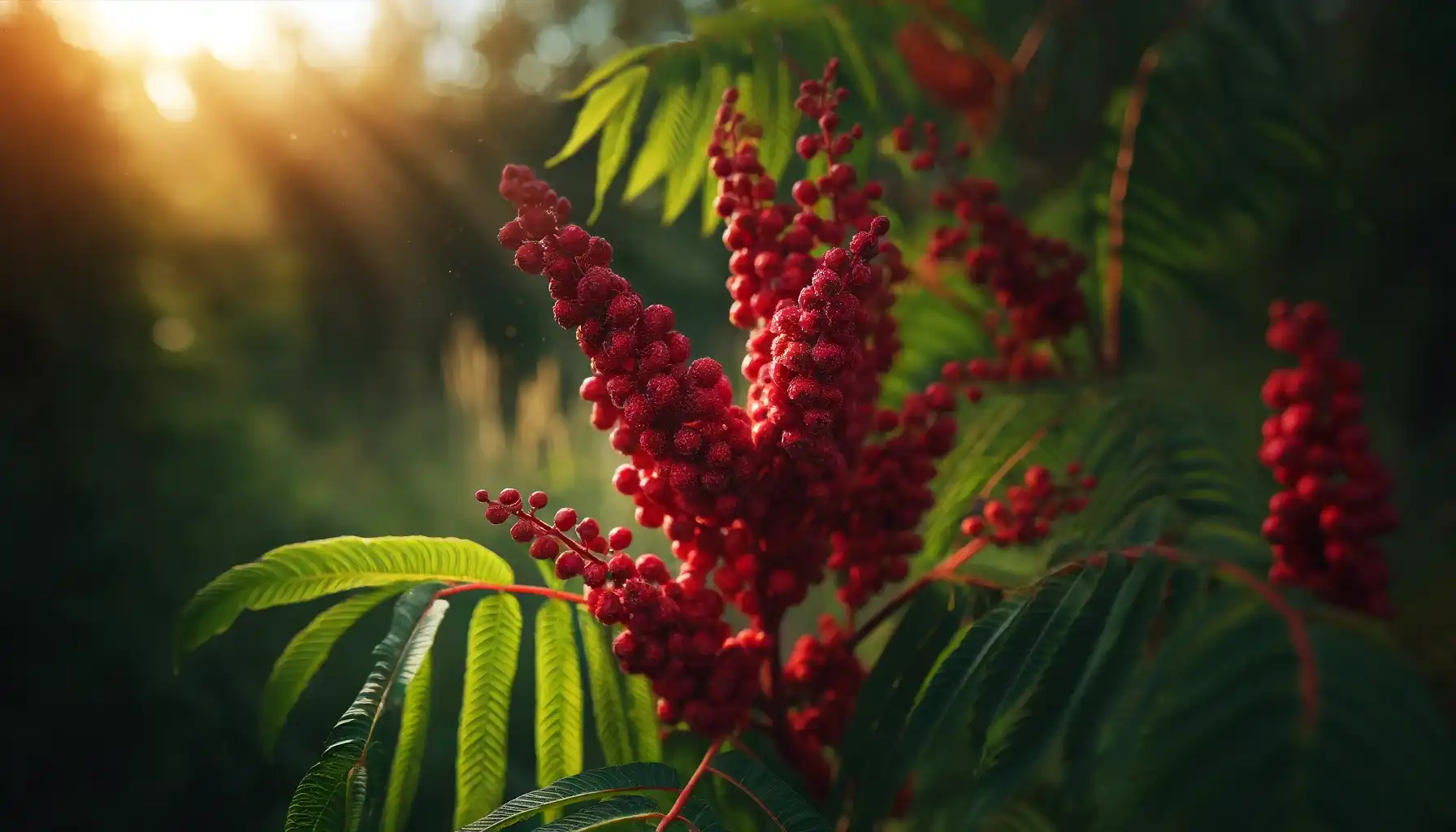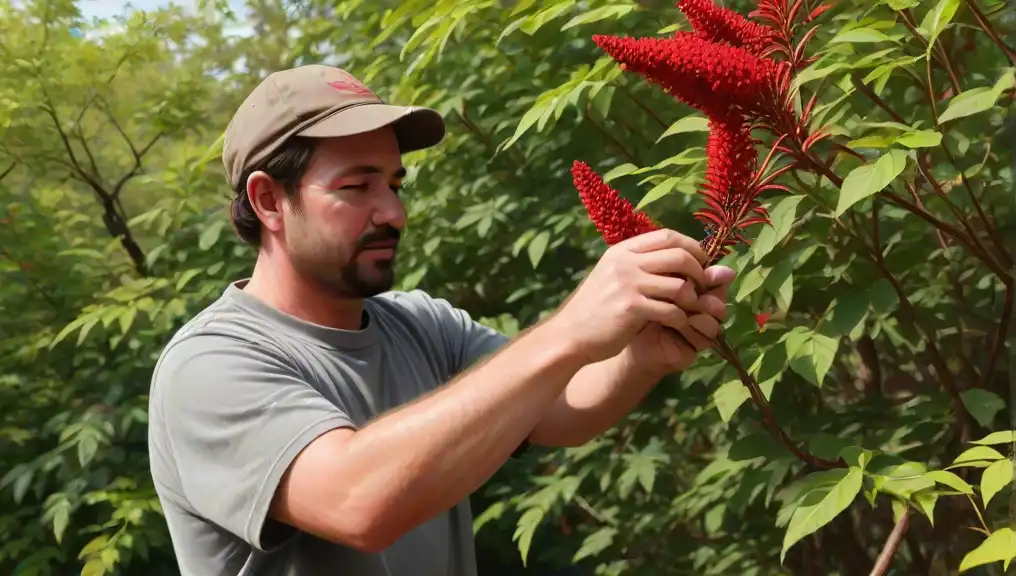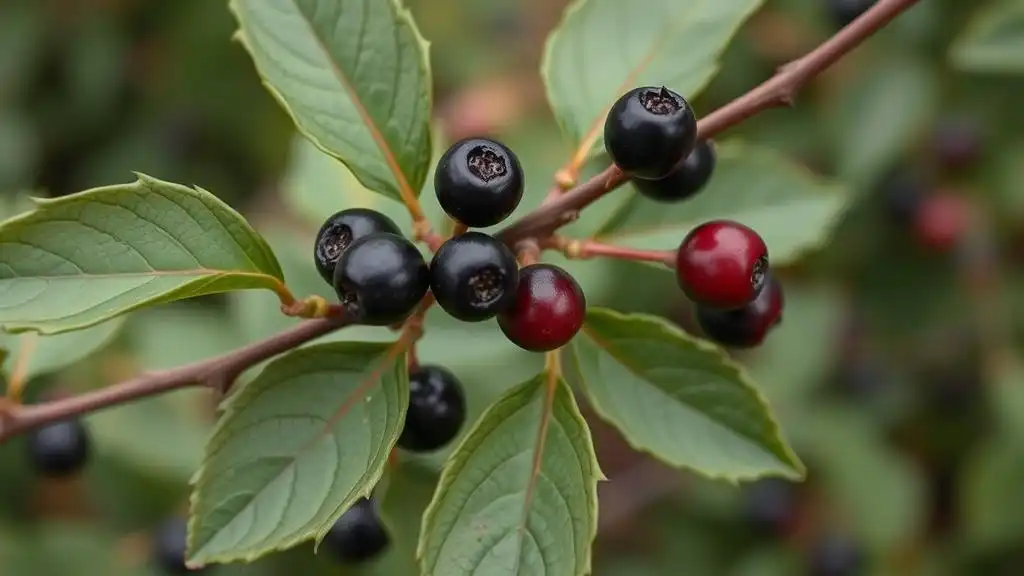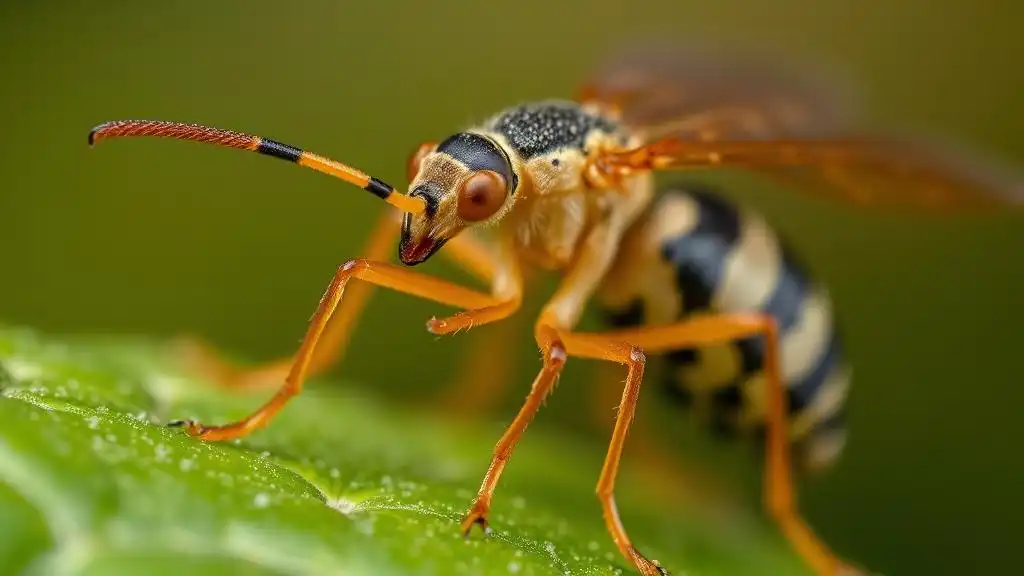Remove and Control: How to Stop Sumac’s Invasion Effectively

Beauty does not necessarily equal benevolence and goodwill. The same goes for gardening, too. Visually appealing plants of sumac are those floral creations that botanists usually consider a major plant problem. Thanks to unstoppable distribution and rapid growth, these plant species easily invade local landscapes and defeat any greenery in the battle for resources.
Contents:
Beauty does not necessarily equal benevolence and goodwill. The same goes for gardening, too. Visually appealing plants of sumac are those floral creations that botanists usually consider a major plant problem. Thanks to unstoppable distribution and rapid growth, these plant species easily invade local landscapes and defeat any greenery in the battle for resources.
Fighting with sumac is one of the common issues occurring in temperate and subtropical environments. But what exactly lies behind these terrific plants, how do you kill sumac trees, and why is it necessary? Follow our material to protect the world of flora and keep it balanced all the time.

What Do We Mean by Invasive Sumac?
In essence, invasive sumac is a common name referring to certain types of flowering plants within the Rhus genus that boast aggressive growth patterns of all forms. The key characteristic of these plants is the damage they cause to other members of local ecosystems. Such species as smooth sumac are believed to be the most uncontrollable and invasive representatives of the genus, though it may seem beautiful at first.
Although there exist dozens of sumac species, each bearing its own unique characteristics, some features may definitely help one classify plants as sumacs via their common traits. In general, sumac trees and shrubs have large compound leaves that turn red, orange, or bright yellow colors every fall, and berry-like drupes arranged conically.
The combination of tree peculiar features, i.e., efficient reproduction mechanisms (dual propagation by seeds and rhizomes), resilience, and strong, deep root system, makes it possible for them to efficiently take over new territories, supersede other plants, and, hence, reduce biodiversity within their region.
The Impact of Invasive Sumac on Gardens
For a good reason do people prefer to stay away from sumac plants and protect their gardens from impudent invasion and further health-related complications. To fully understand what may happen to one’s garden, we recommend that you thoroughly investigate possible consequences and challenges common to all the sumac-infested regions.
Competition With Garden Plants for Local Resources
As stated before, sumac may pose a significant threat to the volumes of nutrients and water stored in the soil, thanks to their heavy-feeding nature, and accessibility of sunlight as well. As for the latter, the dense foliage of sumac is to overshadow other plants, lead to inactive photosynthetic activity, and reduce vitality, too.
Biodiversity Loss
As soon as sumac invades a territory, it sooner becomes a dominant plant species there. Such an environmental catastrophe will inevitably lead to floral disbalance and negatively affect wildlife dependent on the plants for food and shelter.

Soil Alteration
Like the majority of invasive plant species, sumac can alter the soil structure and its composition, too. This is to happen because of their deep and strong root systems that may change soil chemistry, e.g., nutrient balance and pH level.
How Do You Get Rid of Sumac Trees?
The first thought that may haunt a gardener in such a situation is “How do I get rid of sumac trees successfully? Basically, there are several options that may be employed when fighting with sumac invasion during their active stage, i.e., in summer, though each of them depends on the particular case. So let us briefly cover the most efficient methods to use on the gardening scene.
Mechanical Removal
One of the most popular options is mechanical removal which presupposes cutting, digging, and burning. Some botanists assert that such a method cannot eliminate the whole population of sumac, for most people cope with what is above the soil. The problem, though, literally lies in the ground.
Make sure you cut sumac twice to hinder photosynthetic activity and remove rhizomes, so the plants do not reproduce the next season. Burning and excavation may also solve the problem, but when performed by specialists only.

Chemical Control
Not the most environmentally friendly, though efficient method involves the use of herbicides when other options, such as mechanical ones, are not enough. Applying a systematic herbicide which is to contain glyphosate or triclopyr to freshly cut stumps or spraying it all over the sumac plant may help one kill the roots and prevent resprouting as well. Nevertheless, it is always better to follow the product’s instructions to achieve better results.
Important Notes
The best idea is to combine several methods and find the most appropriate one, e.g., cut off the sprouts, then burn down the sumac plants, and dig out the roots, if possible. When sumac species are mixed with floral communities, avoid using burning, excavation, or extensive herbicide spraying to prevent harming other plants but focus on the target vegetation only. So, how do you think you should select an appropriate approach?
The most useful tool to utilize in the realm of gardening is AI Plant Finder. This app is a masterpiece created in collaboration with scientists, AI engineers, and plant lovers who wish to contribute to environmental education. Among the most useful features, one may note plant and disease ID by photos, a digital encyclopedia consisting of more than 400,000 plant species, plant care reminders, the “My Garden” space for keeping track of your greenery, and much more.

Why is AI Plant Finder a good assistant when copying with sumac plants? First, you should accurately identify what type of plant you see. Secondly, it is important to explore information about the plants you wish to save and those you are eager to get rid of.
Discover new details with plant cards in the AI Plant Finder app and the treatment plan that meets your needs and expectations. Finally, make sure you manage your plants properly, set up care reminders, and communicate with other plant enthusiasts, too!
Removing sumac plants is a delicate process that requires careful consideration and planning. The first rule is to manage your plants thoughtfully and control newly emerging instances in the garden regularly. This is how you may prevent serious complications and ensure your yard remains a healthy and thriving place as long as possible.
Share:
Read More
Identify Any Plant, Diagnose Every Disease
Download Our App Now!


